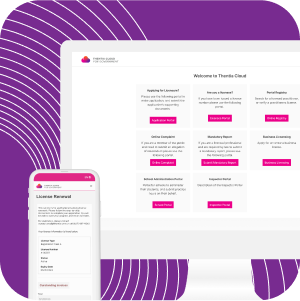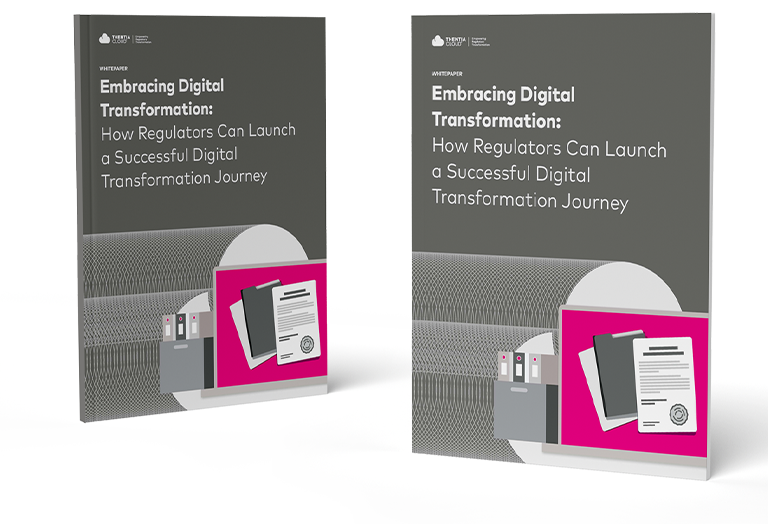Although artificial intelligence (AI) has been around since the 1950s, it wasn’t until the launch of ChatGPT in late 2022 that millions got to experience its potential first-hand. Since then, people all over the world have started thinking about how the technology could impact their personal and professional lives. That includes leading regulators — a growing number of whom want to use AI to make their regulatory processes easier and more efficient — but are rightly concerned about adopting a technology that’s not yet widely understood and that could potentially lead to unintended consequences. And without comprehensive federal guidelines on artificial intelligence, individual states and other jurisdictions are establishing policies that harness the advantages of AI while implementing measures to mitigate its risks.
Below we consider six use cases for AI in regulation, highlighting some of the risks associated with each. We then consider some of the key factors regulators may want to keep in mind prior to adopting AI in their technology and processes.
How AI could transform regulation
There are numerous ways that AI could help regulators do their jobs faster and more efficiently by automating what have historically been highly manual processes. Some of the most likely use cases for the technology include:
- Document recognition and verification. AI could be used to validate whether someone applying for or renewing a license or permit has uploaded the correct documents, that those documents are legible and valid, and that they haven’t been altered in any way. Automating the verification process would result in faster application processing, cost savings, and increased customer satisfaction. Yet, given the large array of documents that regulators require, and the fact that those documents vary by jurisdiction, the potential for false positives is a real consideration.
- Identity verification. Another potential use of AI would be to verify if the ID photos applicants upload are actually of them. While this capability could play an important role in enhancing security and preventing fraud, to be successful it would require access to government databases, which could be challenging. Here again, false positives (and negatives) could also be an issue.
- Natural language data querying. AI could make it possible to access information or reports by simply writing a request or saying it out loud. Not only would this foster greater access to information, it would also allow staff to be more proactive about uncovering the information they need to do their job. It is important to note, however, that the AI could have a limited scope of understanding depending on the dataset it was trained, which could result in queries being misunderstood and users not getting the information they need or, worse, being given the wrong information.
- Application assessment and risk rating. AI could make it easier to evaluate applications based on historical decision data. That evaluation, in turn, could be used to determine a risk score based on the specific information an applicant submits. While using AI in this way has the potential to materially reduce application processing time, there is a risk of bias if past decisions training AI solutions were not scrutinized for bias and discrimination. It may also result in an over-reliance on AI for decision-making.
- Complaint assessment. Another use for AI might be to triage complaints and send them on to the correct departments, identify possible violations, assist investigators to extract relevant facts and precedent, and identify the relevant regulations, rules, and bylaws related to a potential breach. While using AI in this way could save time and effort, it could also introduce risk as there could be bias in the algorithm and complaints could get misclassified.
- Data insights and reporting. Regulators could use AI to look at their entire dataset and uncover patterns and useful insights that would otherwise likely miss. While that can have tremendous value, the risk is that although the insights may be statistically relevant, that doesn’t necessarily mean that they are useful insights. Most importantly, being able to use AI for data insights and reporting also requires the regulator to have all of its data centralized in one place.
With this understanding of some of the potential applications of AI in regulation, and the risks and benefits associated with those applications, let’s examine some of the key factors regulators could consider before adopting the technology.
How regulators are becoming AI ready
In spite of the obvious benefits of using AI in regulation to drive efficiency, there are potential downsides, too. Even more consequential than false positives or other errors is the potential for unintended consequences. Imagine, for example, an AI-powered chatbot that fails to grasp the unique context of a particular situation and end up sharing information with a user that does more harm than good. And, there is always the risk that an AI will adopt any of the biases contained within the datasets it was trained on and apply those biases to whatever task it performs.
To avoid situations like these, regulators will need to be vigilant. That begins with working with their technology vendors to better understand AI solutions and ensure transparency so that they can have open conversations about what data should and shouldn’t be used to train AI models. Regulators should also expect to know where AI is being built into their platforms or systems and where staff, applicants, and license holders will be interacting with AI.
Ultimately, regulators will need to strike a balance with AI. They will need to be open and flexible enough to take advantage of the technology to further their mission of public protection, while keeping the right guardrails in place to prevent unintended outcomes or harm. To do so, regulators should partner with a vendor they trust and that is upfront about how their AI models work.
Dive deeper into AI’s impact on regulation by watching our expert panel discussion
Tune into an information webinar replay featuring industry experts Rick Borges (Thentia), Jennifer Garrett (Wisconsin’s Department of Safety and Professional Services), and Michelle Sigmund-Gaines (Oregon Board of Physical Therapy). This engaging session delves into the transformative power of AI in regulatory practices, balancing efficiency with compassionate regulation.
Discover expert perspectives on overcoming AI’s challenges and leveraging its potential. Watch the recording to enhance your understanding of AI’s role in the future of regulation.













